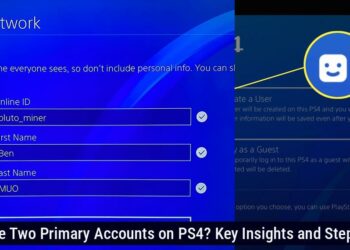Decoding Time Zones: Your Hilarious Guide to Conquering Zulu and Central Time (and Not Looking Like a Time Tourist)
Do time zones feel confusing? You’re not alone. Terms like “Zulu Time” add to the confusion. Is it lunchtime or time to call grandma? She still tries to figure out DST.
This guide is here to help. It battles time zone confusion. We will focus on Zulu Time (UTC) and how it works with Central Time (CST/CDT). Let’s dive in and untangle this time mess.
Zulu Time Unveiled: It’s Not as Exotic as it Sounds
First up, Zulu Time—or UTC (Coordinated Universal Time). It’s the world’s official time. Think of it as the granddaddy of time zones. It’s known worldwide. “Zulu Time” is popular among weather folks. Scientists prefer “UTC.” It’s like a celebrity recognized by two names.
But why Zulu? “Zulu” comes from the military alphabet. Z means zero offset from Greenwich Mean Time. UTC is just the agreed abbreviation. Both point to a global time standard that avoids confusion.
Who uses Zulu/UTC?
- Military: The U.S. military uses Zulu in messages. This avoids global time confusion. Imagine global operations where time goes wrong. Chaos! Zulu Time helps avoid that.
- Pilots: Pilots travel across time zones daily. Zulu Time prevents them from landing in yesterday.
- Scientists: Astronomers and navigators use UTC for precision. It’s their reliable tool for accuracy when tracking stars or communicating with Mars rovers.
Decoding the Zulu Time Code: It’s Simpler Than You Think
Zulu timestamps may seem complex, but they are logical. Think of them as codes that are simple to crack.
A typical Zulu timestamp looks like this: YYYY-MM-DDTHH:MM:SSZ.
- YYYY-MM-DD: Year, month, day.
- T: A simple separator between date and time.
- HH:MM:SS: Hours, minutes, seconds in 24-hour format. No AM/PM confusion!
- Z: The grand finale! This tells you it’s Zulu Time (UTC).
So, 2024-07-26T14:30:00Z means July 26, 2024, at 2:30 PM UTC. Not too complex! Unless you are a rocket scientist, in which case you might already know this.
Central Time (CST/CDT) and Zulu Time: A Time Zone Tango
Now, let’s talk Central Time (CST/CDT). Zulu Time is global. Central Time is our regional star in North America.
The main thing is the offset: Central Time is behind Zulu Time. Central Time simply needs more rest than the rest of the world.
- Standard Time (CST): Central Standard Time (CST) is UTC-6. It’s six hours behind Zulu Time.
- Daylight Saving Time (CDT): Central Daylight Time (CDT) is UTC-5. In summer, we shift forward, reducing the gap to five hours.
Converting Zulu Time to Central Time: The Math (Don’t Panic!)
Converting Zulu to Central Time is simple. Just subtraction! Follow these rules:
- CST: Subtract 6 hours from Zulu Time.
- CDT: Subtract 5 hours from Zulu Time.
Example Time! If it’s 18:00Z (6:00 PM Zulu).
- In CST: 18:00 – 6 hours = 12:00. So, it’s 12:00 PM CST. Lunchtime!
- In CDT: 18:00 – 5 hours = 13:00. So, it’s 1:00 PM CDT. Still lunchtime, but later!
Excel to the Rescue: Time Conversion for Spreadsheet Superheroes
Spreadsheet warriors can rejoice! Excel is a trusty sidekick for time zone conversions. You can’t convert “Zulu Time” directly with a function, but you can work around it. Treat Zulu time as UTC and adjust for Central Time.
Here’s how:
- Enter Zulu Time as Text: Type your Zulu timestamp as text, e.g., “2024-07-26 18:00Z”. Excel might reformat it, so ensure it’s text.
- Extract Date and Time: Use Excel functions like LEFT, MID, and RIGHT to separate date and time parts for calculations.
- Convert to Excel Time Value: Use functions like TIMEVALUE if you need calculations within Excel.
- Subtract the Offset: For CST, subtract 6 hours (or 5 for CDT). Excel recognizes time as fractions of a day.
- Format as Central Time: Format the resulting cell to display the time in Central Time format.
No magical function named “CONVERTZULUTOCENTRALTIME” exists, but a little Excel skill does the job. For complex needs, explore Excel’s date and time functions in detail.
Eastern Time (EST/EDT) to Central Time (CST/CDT): The Neighborly Time Zone Swap
Next, let’s look at Eastern Time. Converting between Eastern and Central Time is simple since they are next-door neighbors.
The Golden Rule: Central Time is always 1 hour behind Eastern Time.
If it’s 3:00 PM Eastern Time, it’s 2:00 PM in Central Time. Just subtract an hour, and you’re done. No complicated UTC offsets needed!
Zulu Time and Eastern Time (EST): A Quick Glance
If you’re curious about the Zulu-Eastern connection:
- Eastern Standard Time (EST) is UTC-5. Just like Central Daylight Time!
- This means that during EST, Eastern Time is 5 hours behind Zulu Time.
When Standard Time is active, Eastern and Central Daylight Times align with their UTC offsets. It may seem confusing. But remembering these offsets will help you navigate the time zones!
UTC to Local Time: Bringing It All Back Home
Converting UTC to your local time? You are already skilled after learning Zulu to Central Time! The principle stays the same:
- Know Your UTC Offset: Google your time zone’s offset. Search for “UTC offset [your city]” or “[your time zone name] UTC offset”.
- Add or Subtract the Offset:
- If your time zone is behind UTC (like Central), you subtract.
- If your time zone is ahead of UTC, you add.
- EST is UTC-5.
- Subtract 5 hours from 10:00 UTC: 10:00 – 5 hours = 5:00.
- This means 10:00 UTC is 5:00 AM EST. Coffee time!
Example: Converting 10:00 UTC to EST.
Time zone conversions do not have to be confusing. With understanding of Zulu/UTC and offsets, plus a dash of Excel magic, you can master time zones skillfully. Now go ahead and manage those time zones well—schedule that call with grandma without waking her at 3 AM!











